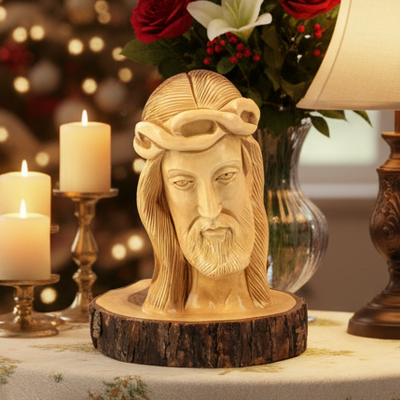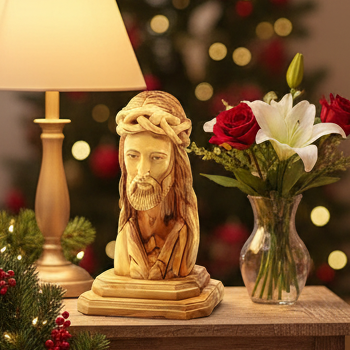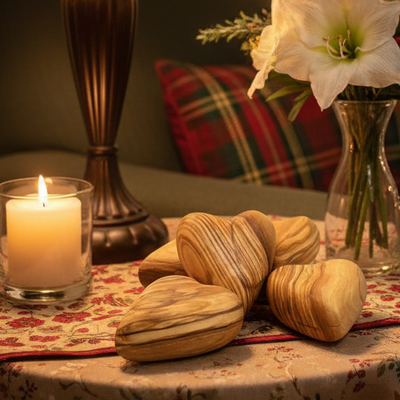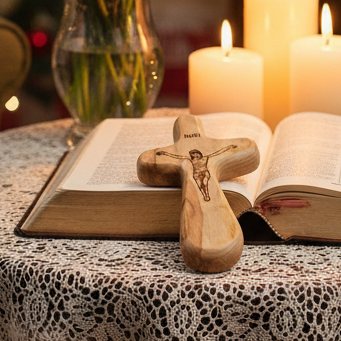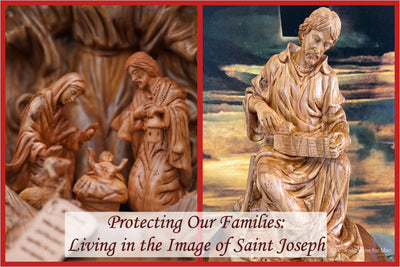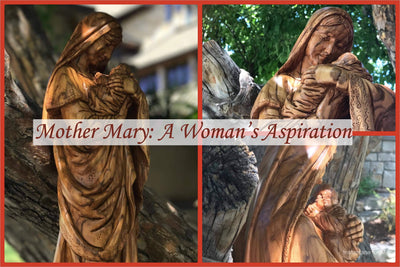The Old City, which is called al-Balda al-Qadimah in Arabic, is divided into four neighborhoods, which are named according to the ethnic affiliation of most of the people who live in them. Entering through the Jaffa Gate and traveling to David Street places the Christian Quarter on the left. On the right, as you continue down David Street, you'll enter the Armenian Quarter. To the left of Jews Street is the Muslim Quarter, and, to the right, is the Jewish Quarter.
 The Christian Quarter - the Church of the Holy Sepulchre and the scenic Muristan Square from the bell tower of the Lutheran Kirche of the Redeemer
The Christian Quarter - the Church of the Holy Sepulchre and the scenic Muristan Square from the bell tower of the Lutheran Kirche of the Redeemer
The Christian Quarter
- The Christian Quarter is the most visited quarter of the Old City.
- It is home to about 40 holy sites to Christians. Therefore, in alleys you will see priests and pilgrims roaming around from around the world.
- Most holy sites are built right beside each other, that they look intertwined and sometimes indistinguishable from each other!
- The most popular starting point for Christian tourists is the Church of St. John The Baptist.
 The Church of St. John the Baptist, who Baptised Jesus Christ, in the Christian Quarter
The Church of St. John the Baptist, who Baptised Jesus Christ, in the Christian Quarter
- The Church of the Sepulcher, where Jesus was crucified and then buried, is obviously in the Christian Quarter. (Read more about The Church of the Holy Sepulchre and The Holy Fire)
 The most visited site in the Church of the Holy Sepulchre which is the Tomb of Jesus.
The most visited site in the Church of the Holy Sepulchre which is the Tomb of Jesus.
- It is famous for its friendly shopkeepers will go to any length to make you feel welcomed. They will not only invite you into their stores to shop, but will sometimes serve you cookies from a bakery nearby and freshly squeezed pomegranate juices. (Read our blog about Pomegranates and their Religious and Cultural Significance in the Holy Land).

- The streets here are almost as crowded as the Muslim quarter.
The Muslim Quarter
- The Muslim Quarter is the largest and most populated of the four quarters in the Old City.
- Like the Jewish Quarter, it has narrow alleys, but the streets are a lot busier because of its famous market, called Al-Souq in Arabic. It sells everything from handmade jewelry, scarves, hookahs to Palestinian spices, authentic falafel, traditional bagels, and the best Kanafeh.
 The narrow alleys that lead to Temple Mount and the Souq in the evening.
The narrow alleys that lead to Temple Mount and the Souq in the evening.
 Palestinian spices, authentic falafel, traditional bagels, and the best Kanafeh
Palestinian spices, authentic falafel, traditional bagels, and the best Kanafeh
- It’s major shrine is the Temple Mount, or Haram es-Sharif where the Dome of the Rock and the al-Aqsa mosque can be found. The Dome of the Rock is where Muslims believe that Muhammad ascended into Heaven, accompanied by Gabriel, and it is also home to the Foundation Stone which is sacred to Muslims, Jews, and Christians.
 View of the Temple Mount and the ancient Jewish-cemetery in Olive Mountain, the Old City of Jerusalem / The Dome of the Rock
View of the Temple Mount and the ancient Jewish-cemetery in Olive Mountain, the Old City of Jerusalem / The Dome of the Rock
- This area today preserves some of the fine medieval Islamic architecture.
- Monastery of the Flagellation: where Christ was flogged by the Roman soldiers prior to His crucifixion and is the first point on the famous Via Dolorosa, the first of the 14 Stations of the Cross. Surprisingly, the first seven stations wind through the Muslim Quarter, and the last five are inside the Church of the Holy Sepulcher, in the Christian Quarter. As a result, many shops that are owned by Muslims exclusively sell Christian souvenirs.
 Monastery of the Flagellation / Via Dolorosa
Monastery of the Flagellation / Via Dolorosa
- In addition to Muslims, Jewish families also reside in this quarter.
The Jewish Quarter
- It’s a lot quieter than other parts of the Old City.
- The narrow alleyways are lined by the homes of more than 1,000 Jewish families, along with schools for Torah study, shops and restaurants.
- The Western Wall is located here where Jewish people leave prayers between the cracks. However, there are separate sections for men and women.
 Western Wall of Jerusalem and the Dome of Mosque Al-Aqsa
Western Wall of Jerusalem and the Dome of Mosque Al-Aqsa
- The Cardo, an excavated and partially reconstructed section of the Jerusalem main thoroughfare in the Byzantine era, is another part of the Jewish Quarter that can provide you with an insight into the history of the Old City.
 Hurva Synagogue in the Jewish Quarter
Hurva Synagogue in the Jewish Quarter
The Armenian Quarter
- It is the smallest of all the quarters.
- This area is home to some 2,500 Armenians, an ancient community who have resided here for over 2,000 years.
- It has more of an ancient feel to it because of its compact size.
- The standout site to see is the amazing Citadel, known as the Tower of David.
 Tower of David in the Armenian Quarter
Tower of David in the Armenian Quarter
- There is also the Armenian Museum and St. James Cathedral.
- If you’re looking for ceramics, this is the place to go!
Don’t get yourself confused and just get lost through the labyrinthine paths of this holy place, and you’ll know when you leave a quarter and enter into another because each of the quarters has its own feel, its own atmosphere, and amazing in its own way.
Join one of our 2018/2019/2020 upcoming pilgrimages and to walk in the footsteps of Jesus Christ, visit the Holy Land, and get the chance to explore every corner of each quarter of the Four Quarters of the Old City of Jerusalem!
